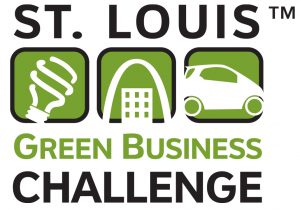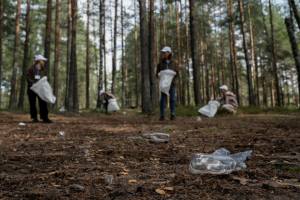Founded in 1859, the Missouri Botanical Garden is the nation’s oldest botanical garden in continuous operation and a National Historic Landmark. Serving as a center for botanical research and science education, as well as an oasis in the city of St. Louis, the Garden seeks to inspire and educate area residents about the benefits of being good environmental stewards through responsible and sustainable use of natural resources. The Clean Air Partnership is pleased to shine a spotlight on the Missouri Botanical Garden for its noteworthy green achievements and innovations that are having a positive effect on the environment and helping clear the air in the region.
During the 2022 St. Louis Green Business Challenge, the Garden earned the esteemed title of Challenge Champion for completing work with the Leader scorecard and committing to continued implementation of deeper sustainability strategies. The Garden also elected to develop and report on their Champion Innovation Project – Jack C. Taylor Visitor Center Showcases Sustainability and Biophilic Design.
“Missouri Botanical Garden is proud to focus on the Jack C. Taylor Visitor Center as our Champion Innovation Project,” said Glenda Abney, Vice President of Sustainability for the Missouri Botanical Garden. “Years in planning, this gracious new doorway and welcome to the Garden was supported by over $100 million in private donations. The building and grounds embody the Garden’s commitment to sustainability through accessibility, design and presentation and operations.”
As part of this project, Missouri Botanical Garden optimized their building envelope and mechanical systems to ensure comfort while reducing annual energy costs by 23% from standard technologies. The Garden installed a 220-kWh solar array rooftop in addition to six, free EV charging stations with 10 chargers to promote the use of alternative transportation modes other than gasoline-powered cars. The Garden also implemented new digital displays and electronic ticketing within the new visitor center to reduce the waste of print materials, fulfilling grant requests and internal conservation goals.
To further reduce environmental impact, the Garden introduced underground cisterns holding 50,000 gallons of rainwater for filtration and sanitization, eliminating municipal-source water treatments for building plant irrigation, as well as low flush and low flow fixtures to reduce building potable water demand by 32%. As a result, indoor and outdoor water management is expected to meet 86% of total site demand, saving an annual average of 679,392 gallons of municipal water use. Additionally, the Garden has planted some 30,000 new specimens and continued the practice of rainscaping plantings, allowing for them to retain 30,000 additional gallons of stormwater on-site.
For more information on the Missouri Botanical Garden and how your company can get involved in the St. Louis Green Business Challenge, subscribe to their weekly E-Newsletter or visit www.stlouisgreenchallenge.com. To learn more about the link between sustainability and air quality, explore our website, like us on Facebook or follow us on Twitter at @gatewaycleanair.


